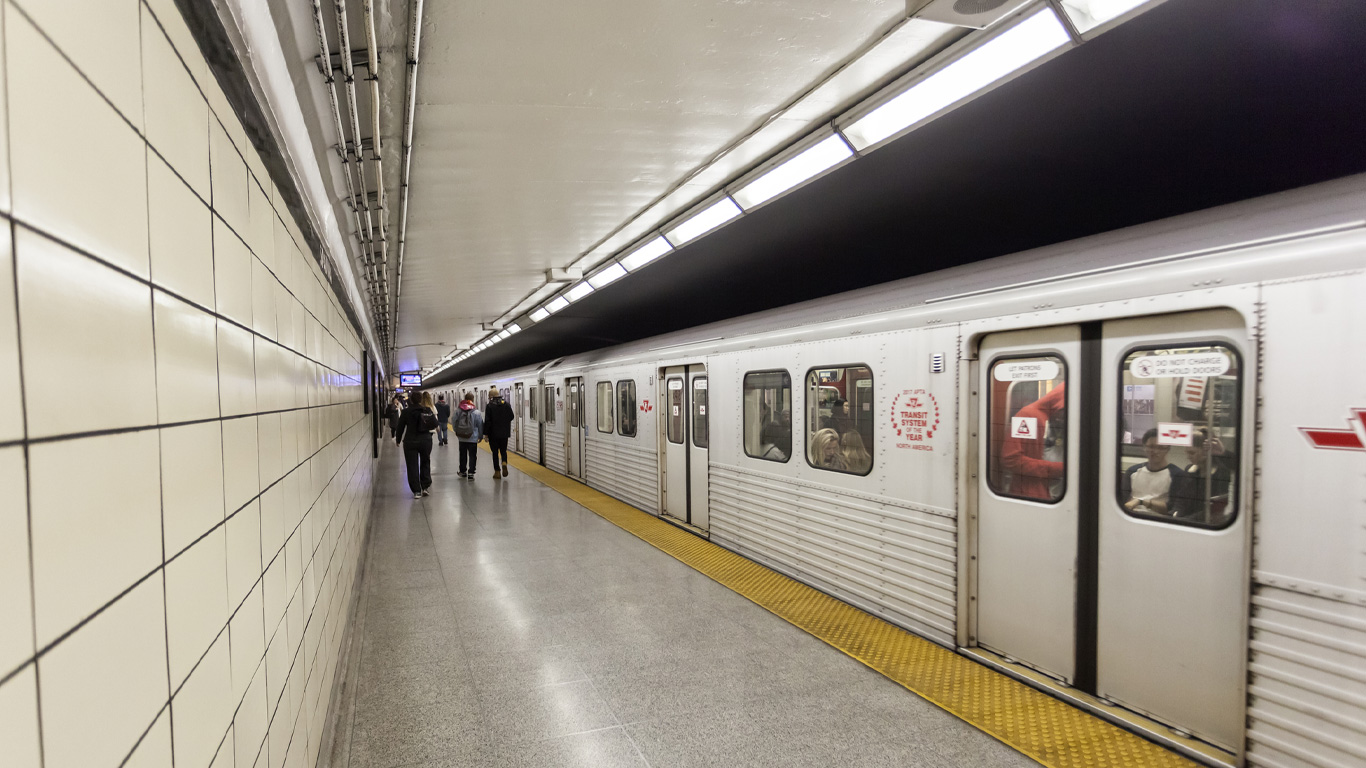
Today marks the 68th anniversary of Canada’s first and only steel wheel subway system in Canada—the Toronto subway.
Canada’s next two rapid transit systems were built in conjunction with world fairs. Montréal’s rubber wheel subway system was built in time for Expo 67, and Vancouver’s SkyTrain has been carrying passengers since Expo 86.
There are also light rail rapid transit systems in Ottawa, Waterloo, Edmonton and Calgary.
Virtually every weekday of the year before the pandemic, millions of Canadians hopped on a bus, boat, train, subway or light rail to get around town.
However, ridership on Canada’s largest urban transit networks has been more like a roller coaster since the start of the pandemic in March 2020, with a scary drop in April (-83.7% year over year) and a gradual climb since then, with a few bumps along the way during the various waves of the pandemic.
Canadians made 771.8 million passenger trips on urban transit networks in 2021, 9.1% fewer rides than in 2020, when almost half (48.7%) of total ridership occurred in the first quarter, essentially before the pandemic.
As 2021 progressed, transit ridership further recovered as vaccination rates increased and restrictions were eased. Passenger volumes hit a pandemic-era high of 89.6 million rides in November 2021, as more people returned to workplaces; students attended in-person classes; and consumers resumed shopping, dining out and attending entertainment venues.
Overall, transit ridership steadily recovered in 2021, with ridership as a percentage of the pre-pandemic 2019 levels increasing steadily, from 27.1% in January to 56.1% in December. Nevertheless, there were 1.1 billion fewer riders in 2021 than in 2019, with agencies in Quebec and Ontario accounting for more than two-thirds (70.7%) of this drop.
Low ridership continued to impact transit agency finances. Total operating revenues (excluding subsidies) declined 5.7% from a year earlier to $1.8 billion in 2021 and were down $2.3 billion compared with the operating revenues earned in 2019.
With the Canadian economy now almost fully reopened, vaccination rates among the highest in the world and more people heading back to the office, will urban transit operators begin to see ridership approach pre-pandemic levels in 2022?
Contact information
For more information, contact the Statistical Information Service (toll-free 1-800-263-1136; 514-283-8300; infostats@statcan.gc.ca) or Media Relations (statcan.mediahotline-ligneinfomedias.statcan@statcan.gc.ca).
